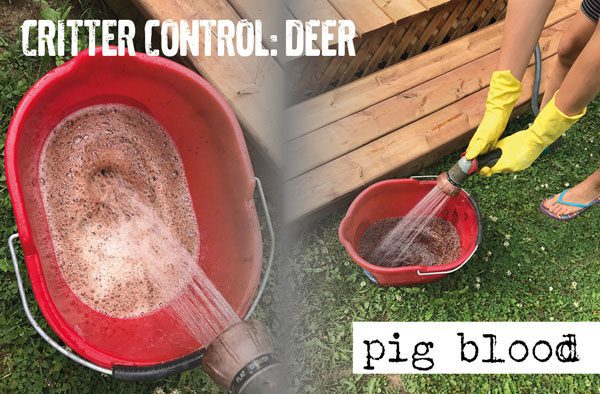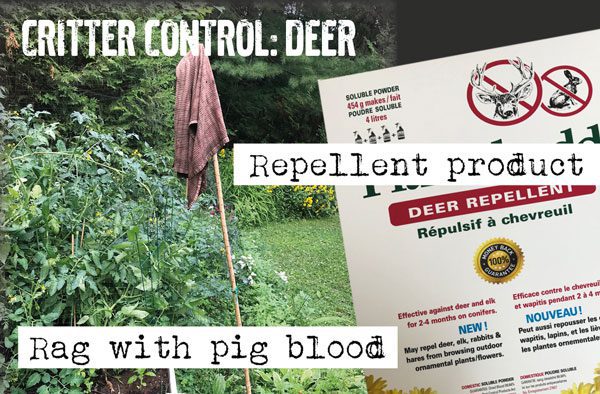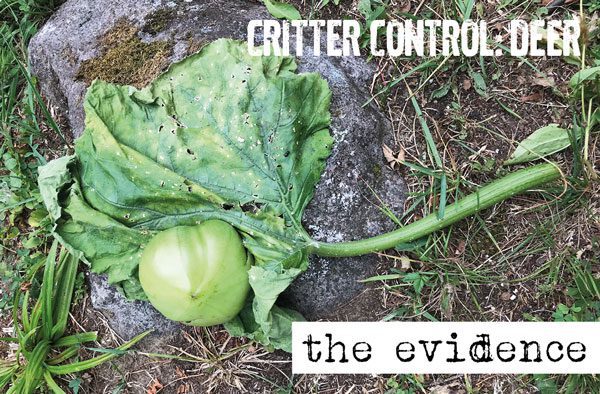At dusk the other night, I had a staring contest with a deer in my backyard. And lost. After waving my son’s toy lawn mower in the air like a crazy person, she finally left, albeit very reluctantly. The next morning, I awoke to a collapsed deer fence around my vegetable garden; the tops of my tomato plants had been savagely attacked. I looked around for the culprit, only to see she had left a calling card: a chewed-up hosta. I was clearly dealing with a real sicko.
Perfect Habitat For Deer
It’s quite the predicament because I love deer. They’re beautiful animals, but I hate seeing them in my gardens. It’s inevitable; I have 35 hostas in my yard… 35!!!! My local gardening shop describes them as caviar for deer. But you start messing with my tomato plants, and you are literally taking food out of my mouth. I’m the type of person who doesn’t share meals at restaurants; you can only imagine how this violation made me feel.
Beyond the fact that I have far too many hostas for my own good, we have created quite the problem where deer are concerned. Despite repeated calls in my neighborhood for people to stop feeding them, it happens constantly. It results in losses in the garden, but also the loss of life; deer are often killed by cars where I live. Having more of them around has also caused a spike in Lyme disease cases.
Tricks For Critter Control
I recently came across a book called The Guide To Humane Critter Control: Natural, Non-toxic Pest Solutions To Protect Your Yard and Garden, by Theresa Rooney. It’s an easy-to-read and beautifully-illustrated book with wonderful tips and tricks to keeping all unwanted wildlife out of the garden. Surprisingly, none of her tips involve waving toy lawn mowers at deer.
The first thing you need to do after your gardens have been attacked is to identify the guilty party. My gardens were hit at either dawn or dusk, prime food-gathering times for deer. My tomato plants were about 4 or 5 feet tall, and the bite marks on the leaves and stems were very ragged; another sign of deer. Then there was that chewed-up hosta and the staring contest… I knew what I was dealing with.
For cases like these, Rooney recommends the following tricks in her book:
Install A Deer Fence
If you know where the deer enter your property, consider adding a fence there. Deer very rarely deviate from their chosen paths. It could either be a sturdy, 8-foot tall fence, or a 5-7 foot temporary one made of deer netting.
You could also use the deer netting to create a hammock above your crops and hostas. Similar to fishing line, deer netting is hard to see and when their sensitive noses hit it, they’ll likely turn away.
Permaculture
A combination of something permanent with agriculture, permaculture is the next best option. For example, a hedgerow of shrubs planted close together could help keep the deer out. They often won’t push through a hedge over fears of a predator being on the other side.
You could also choose to plant a few sacrificial plants on the outside of the hedge; the deer will eat these, and with their hunger satisfied, hopefully, be on their way. Planting thorny bushes on the outside of the hedge may also do the trick.
Ornamental grasses planted by your precious crops have also worked for many people. Deer don’t like these very much. Other deer-resistant plants include lavender and the wine and roses shrub.
Natural Repellents
Deer have a very strong sense of smell and are easily repulsed by scents such as garlic, Irish Spring soap, rotten eggs, or coyote and wolf urine.

I have a large, wooded property with multiple entry points for the deer, so fencing it all in isn’t really an option. I already have a deer fence around my vegetable gardens, and that obviously didn’t work out too well for me. Permaculture is an excellent idea, but certainly very expensive to do all at once. I decided to head down to my local hydro shop and buy a deer repellent made with pig’s blood.

It’s all-natural and harmless to kids, dogs, and your plants. You can choose to spray it onto the leaves, but similar to the cayenne pepper trick, you’ll have to reapply after every rainfall. To avoid that, the hydro shop I bought the product from recommended soaking some old dish rags in the blood and hanging them at possible entry points, as well as around the garden.
I spent the evening soaking dish rags in pig’s blood, which is not typically how I enjoy spending my free time. So what if I was covered in it and felt a little bit like Carrie from the Stephen King novel/movie? Here’s hoping it was worth it…
Do you have any tips and tricks worth sharing?
